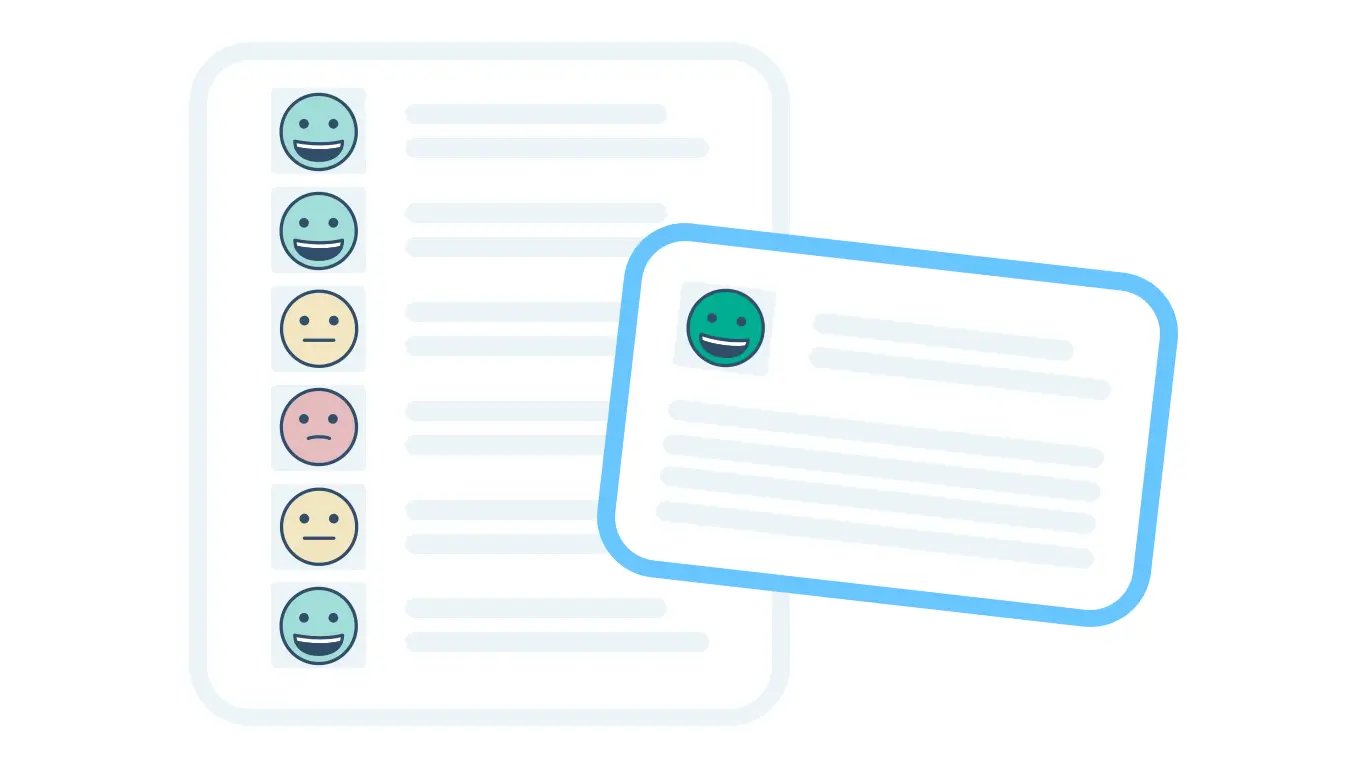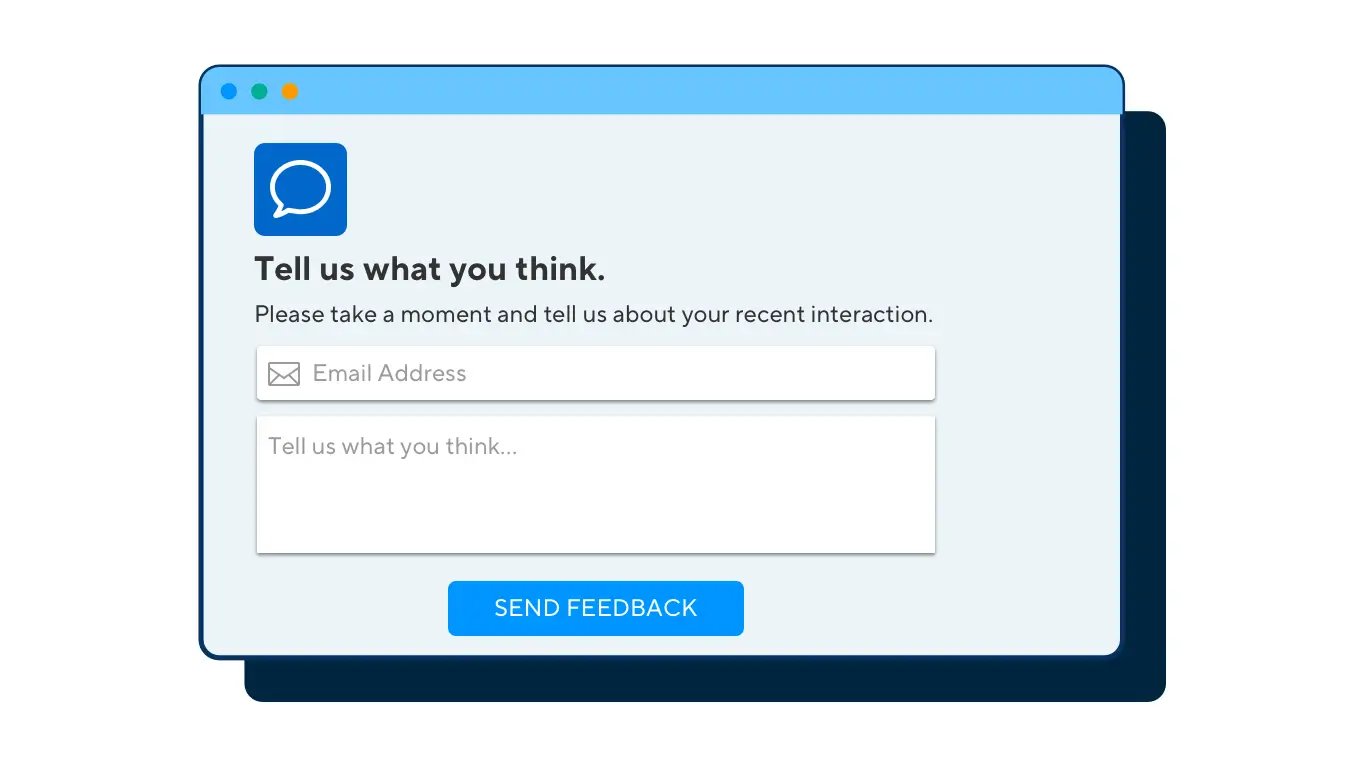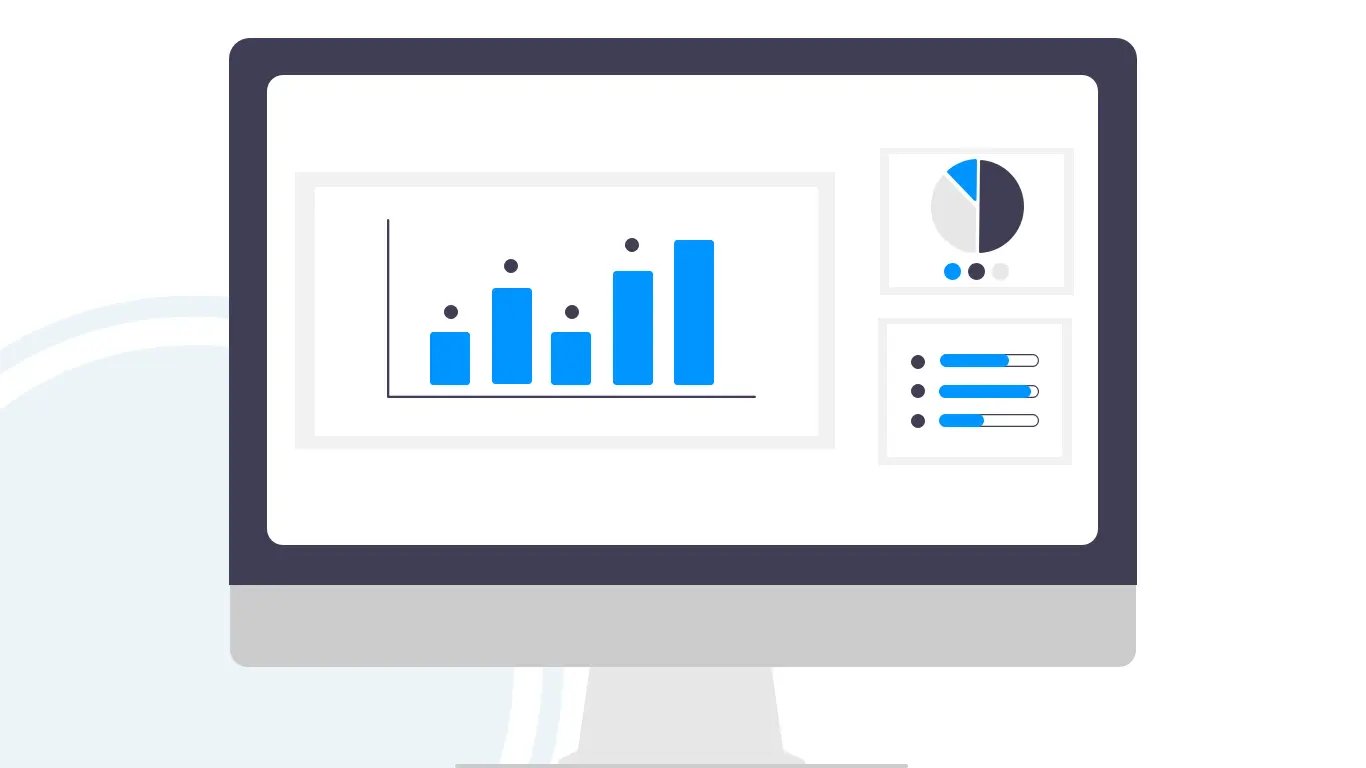
If you want to deliver truly delightful customer experiences, understanding your customers' needs and preferences is essential.
The best way to understand what your customers want is through feedback.
From collecting feedback using surveys to delving into online communities and using technology for analysis, we’ll uncover the strategies and techniques to boost your customer feedback processes.
Collecting Customer Feedback
Let’s start by defining what customer feedback means.
Customer feedback is the information and opinions that customers share about your product, service, or brand. You can gather various insights from customer feedback.
Collecting feedback is also important because allows you to take the comments and use it to improve processes. It also helps build trust by showing customers that you’ve taken their feedback and done something about it. This is especially important when it comes to negative feedback.
Customer feedback can:
- Give you insight into your customers’ experience.
- Help you identify issues and improve processes.
- Contribute to employee training.
- Help you enhance customer satisfaction.
- Assist in informed decision-making.
Types of Customer Feedback
There are two primary types of customer feedback: solicited and unsolicited.
Solicited Feedback
When collecting solicited feedback, you actively seek customers’ opinions. You can collect feedback via surveys, questionnaires, or feedback forms. Solicited feedback allows you to focus on specific aspects of your offering or service.
Unsolicited Feedback
Unsolicited feedback, on the other hand, is unplanned and is shared by customers unprompted. You’ll find this type of feedback in social media posts, online reviews, and interactions with your support team.
5 Proven Methods for Collecting Customer Feedback
There are multiple ways to gather customer feedback, understanding the different methods and following best practices will ensure a smooth collection process. Here we’ll explore the different options available to you.
1. Customer Feedback Surveys and Questionnaires

Satisfaction surveys and questionnaires are classic feedback for soliciting structured feedback.
Benefits: Surveys and questionnaires for feedback
- Targeted insights: Surveys allow you to focus on specific areas of interest.
- Data: Results can provide you with quantitative information that can be used to measure customer experience.
- Control: You can make decisions over the questions and the data you collect.
Methods to distribute surveys and questionnaires
- Email: No matter the size of your business, people who have given you their contact information may also wish to give you feedback. For existing customers, you can focus on their experience with your products or services. For prospects, you can inquire about their needs and preferences to tailor your offerings better.
- Website pop-ups: We know pop-ups can be annoying. But well-timed pop-ups have the ability to capture feedback without being obtrusive. Look to see if your website allows you to customize the timing for pop-ups based on specific user behaviors, like time spent on a page or page visited.
- Social media polls: Engage followers with casual, interactive polls. These polls encourage interaction and can help you understand preferences, opinions, and reactions to specific topics or content.
- In-app surveys: Collect user feedback seamlessly while they are actively using your mobile or web application. To be contextually relevant, focus on the user’s experience within the application.
- SMS/Text messages: Text surveys let you reach customers directly on their mobile devices. These are especially useful for quick insights and responses from your target audience. Just remember to keep it short and concise.
- QR codes: Place QR codes strategically in physical locations such as stores or events. Customers can scan the code to access the survey related to their in-person experience.
- Telephone: Use telephone surveys to connect with respondents directly. It’s a personal and inclusive method to collect feedback from those who may not be online or don’t want ot participate in online surveys.
Best Practices: Gathering feedback from surveys and questionnaires
- Keep it concise: Short and focused surveys tend to have higher completion rates.
Mix question types: Combine multiple-choice, rating scales, and open-ended questions for deeper insight.
- Offer incentives: Consider providing discounts or rewards to boost participation.
- Make it timely: At net2phone we send a survey after each case resolution. It's a good way for us to verify that the cases are actually resolved. If the problem wasn’t fully resolved or if the issue came back pretty quickly, we would know through feedback.
- Use diverse sampling: Ensure the sample represents various customer segments, such as industry, size, or needs. Prioritize understanding the needs of all your clients, whether they are large or small.
- Follow-up: at net2phone, if we get low or unexpected survey scores, we follow up with customers and see what’s going on. Dive deeper to learn what experience the customer had to leave that review. This approach also helps in building back trust and confidence.
2. Social Media and Online Reviews

Social media and review sites contain a wealth of unsolicited feedback. Here, you’ll often find customers giving unfiltered feedback on their positive and negative customer experiences.
Benefits: Social media and online reviews for feedback
- Authenticity: Feedback given on these platforms is often genuine and reflects customers’ true sentiments.
- Wide range of customers: These platforms have a wide reach and allow you to collect feedback from a diverse range of customers.
- PR opportunity: Handling negative feedback positively can show your commitment to customer service.
Best Practices: Gathering feedback from social media and online reviews
- Build a community: When you create an engaged community with your followers, it builds trust, and people are more likely to be honest with their feedback.
- Actively monitor: Regularly track social media and review platforms to stay informed.
- Respond thoughtfully: Address both positive and negative feedback. By responding carefully, you can showcase your commitment to satisfaction.
- Stay positive: Use negative feedback as a chance to learn and improve rather than get defensive.
- Use social media monitoring tools: Use monitoring tools to reduce time spent tracking social media comments.
3. Customer Support Interactions, Email and Live Chat

Conversations through emails, live chats, and support tickets can provide you with nuanced insights into your customers’ individual experiences.
Benefits: Support interactions, email, and live chat for feedback
- Direct insights: When customers share their thoughts and concerns, it can give you a better understanding of what is working well and what needs improvement.
- Clear communication: Customers often express issues and expectations explicitly in support conversations.
- Personal touch: Requests and responses can be personalized, demonstrating genuine care.
Best Practices: Gathering feedback from customer support interactions
- Share feedback to agents immediately: If we receive negative feedback following a support interaction, we communicate that message to the agent while it’s fresh. Action and address issues at the moment to prevent that issue from recurring.
- Use customer feedback for training: Categorize the feedback, talk to agents about it, and integrate it into training. Use frequent feedback as an indication of what agents need extra training on.
- Identify trends: Look for common issues in support interactions to address larger concerns.
- Integrate feedback from multiple channels: Get insights from multiple channels for a broader customer experience analysis.
In your journey to gather feedback effectively, you might be working with multiple channels such as email, live chat, SMS, social media, and telephone. This can easily get complex.
An omnichannel contact center lets you engage with customers via multiple interconnected channels.
Using an omnichannel contact center like uContact, you can automate sending customer satisfaction surveys after each interaction, regardless of the channel. You can create a customized report with all the data in one place, making it easy to analyze data from different sources.
4. Online Communities: Reddit, Slack, and Twitch

Online communities are dynamic spaces where customers come together to engage in discussions. These are spaces where you can join, observe, participate, and facilitate conversations to obtain deeper insights from customers and prospects.
Popular online communities:
- Reddit: By following relevant subreddits, you can observe discussions, identify trends, and understand what topics resonate with your audience. You can answer users' questions and comments, directly address concerns, and gather unfiltered feedback.
- Slack: Join or create Slack groups related to your industry. This way, you can meet customers and have direct conversations in real time. You can delve deeper into customers’ experiences, preferences, and pain points.
- Twitch: You might know Twitch as a space for gamers to demonstrate their skills in virtual worlds. However, Twitch users are increasingly interested in learning about real-world subjects – in a similar way to live webinars or video podcasts. The live-streaming format offers a chance to witness real-time reactions to your products or services.
Benefits: Online communities for customer feedback
- Multiple viewpoints: Discussion platforms allow customers from across the world to express their thoughts about your brand.
- Unfiltered perspectives: Reviewing and participating in these spaces can give you a unique opportunity to hear what your customers really think.
- Take part in the conversation: You can actively participate and facilitate conversations.
Best Practices: Gathering feedback from online communities
- Participate actively: Engage in conversations to build connections. Foster meaningful dialogue to create a positive environment.
- Guide, don't dictate: Allow discussions to flow naturally, intervening only when needed. Community leaders or moderators should hold back from immediately jumping in and defending the company or it’s actions. Defensive responses can discourage honest discussions. Instead, focus on actively listening, acknowledge valid pionts and responding thoughtfully.
5. Your Own Website And Community

As a brand, you may have forums, knowledge bases, or learning academies already on your website. If so, take advantage. (Don’t worry if you don’t have these resources in place. You can still gather valuable feedback through the various feedback methods outlined above.)
By analyzing the discussions, questions, and shared solutions, you can gain insights into common challenges and interests.
Best Practices: Gathering feedback from your own online community:
- Deliver value: Provide resources, tutorials, and discussions that genuinely help customers.
- Moderate effectively: Strike a balance between nurturing organic conversations and maintaining order.
- Encourage collaboration: Create spaces for customers to share insights and solutions. This way, you can foster a sense of community.
How to Ask For Feedback From Customers
Feedback from your customers will help you refine your offering, support, and overall customer experience.
To effectively gather customer feedback, you can employ a variety of methods, including surveys, social media, online reviews, support interactions, and online communities.
Here are three effective techniques for gathering audience insights:
1. Customer Feedback Events
Consider organizing a virtual workshop where customers can share their thoughts on your products and services.
Suppose you’ve launched a new app. You can use feedback events to get comments related to your app's features. Using this method, you can guide discussions, receive immediate feedback, and better understand pain points.
2. Social Media Polls
Take to your company's X account (formerly Twitter) or Instagram stories to poll your followers and customers
For instance, you could ask users their favorite feature in your latest software update. This approach not only encourages engagement but also provides a snapshot of popular preferences.
Pro Tip: Instagram survey and poll interactions are valuable signals for the platform's algorithm. By encouraging this interaction, you can help your page gain greater visibility.
3. In-Product Surveys
Integrate a short survey within your mobile or web applications. You can prompt users for feedback after they've completed a purchase or a task.
For example, an e-commerce app could ask customers to rate their recent shopping experience after a purchase. Customers may be more likely to offer suggestions or comments while the experience is still fresh in their minds.
The Art of Listening to Your Customers

Active listening is more than just hearing words; it's about understanding your customers' message.
For feedback delivered face to face, over video conference, or by telephone, focus on being present and in the moment. Give your undivided attention to what's being said.
Active Listening Techniques
Active listening is more than just hearing words; it's about understanding your customers' message.
For feedback delivered face to face, over video conference, or by telephone, focus on being present and in the moment. Give your undivided attention to what's being said.
Here are some best practices for active listening:
- Before responding, take a breath. Calmness will set the tone for the interaction.
- Avoid interrupting; let the speaker finish before responding.
- Nod or provide affirmative cues to show you're engaged.
- Paraphrase what you've heard to confirm your understanding.
- Ask clarifying questions to delve deeper into their points.
- Avoid distractions and focus solely on the conversation. Use tools like AI-powered transcription to record notes.
- Summarize key points to ensure you've grasped the main ideas.
Remember that you're not trying to defend your product or your organization's decisions. Rather you are there to collect and absorb as much information from your customers as possible.
Empathy and Understanding in Feedback Analysis
You might be wondering, what does empathy have to do with analysis? Having an empathetic perspective can help you uncover insights that aren't explicitly stated.
For example, suppose a customer gives this feedback: “I’m having trouble with the new update. It’s frustrating and confusing”
A non-empathetic analysis might lead to fixing the issue and offering clearer instructions.
On the other hand, an empathetic analysis prompts you to put yourself in your customers' shoes. You might realize that the customer relied heavily on the previous version and is struggling to adapt. By empathizing, you recognize the emotional impact of the issue. You can then address the technical issue but also consider providing tutorials and guides to ease the transition.
Responding to Emotional Feedback
Emotional feedback often contains rich insights. When responding, acknowledge the emotions the customer is expressing. The same applies to both positive and negative emotions.
For example, if a customer expresses frustration due to a technical issue, empathize with their frustration. Assure them that you're working to resolve the problem. The ability to respond with understanding diffuses tension.
Learn More: How to improve customer experience in a contact center
How to Use Technology for Feedback Collection

Integrate feedback widgets and pop-ups into your website or app to capture customer opinions while they're still fresh.
For instance, you could employ a pop-up after a customer completes a task, asking them about their experience. These prompts encourage immediate responses and ensure you get feedback at the most opportune time.
Feedback Widgets and Pop-ups: Capturing Real-Time Opinions
Integrate feedback widgets and pop-ups into your website or app to capture customer opinions while they're still fresh.
For instance, you could employ a pop-up after a customer completes a task, asking them about their experience. These prompts encourage immediate responses and ensure you get feedback at the most opportune time.
AI-Powered Sentiment Analysis: Uncovering Hidden Sentiments
You can get beyond surface-level feedback with AI-driven sentiment analysis.
These tools can automatically analyze customer comments, reviews, and messages. It helps gauge the emotional tone behind the words. You will gain deeper insights into not only what customer sare saying but how they are feeling.
Web Analytics: Leveraging User Behavior Data
Web analytics tools provide a wealth of insights into user behavior on your digital platforms. By examining user journeys, click-through rates, and interactions, you can uncover patterns and pain points.
For example, if users frequently abandon their shopping carts on a particular page, it might indicate usability issues that require attention.
What Can You Do With Customer Feedback?
Now that we know how to collect customer feedback, it is time to put it to use. By analyzing and interpreting feedback, you can identify trends, address pain points, and drive improvements that align with your customer’s desires. Here we’ll dive into how you can get started.
Analyze and Interpret Feedback

1. Identify Trends and Patterns
When reviewing feedback, look for recurring issues, themes, or praise.
These patterns can reveal common pain points, preferred features, or aspects of your product or service that stand out.
For example, you might notice frequent feedback expressing the desire for a specific functionality. This can be an opportunity to improve the product.
Recognizing trends within feedback will help you better understand your customers and make better-informed decisions.
Use monitoring metrics like Net Promoter Score or Customer Effort Score (CES) to help identify patterns in what customers value or struggle with.
Learn More: How To Measure Customer Experience: Tracking Key Metrics
2. Categorize Feedback: Positive, Negative, and Neutral
Segmenting feedback into categories helps you organize the information for clearer analysis.
For example, you can put feedback into categories related to processes, agents, or platforms. This feedback can be deemed positive, negative, or neutral based on the sentiment expressed.
This segmentation will simplify your analysis process. Additionally, it will provide a quick overview of customer sentiment and gauge how well your offerings are perceived.
3. Prioritize Feedback: Address The Critical Issues First
Keeping up to date and responding to negative feedback is vital. Your goal should be to respond as quickly as possible, as delays can often exacerbate the problem.
Keep in mind though, negative feedback should be welcomed. See it as an opportunity to learn and grow. It is inevitable that you will receive negative feedback. But, if you approach it with openness and curiosity, you will gain a better understanding of what your customers need.
That’s why, at net2phone, when feedback scores fall below a threshold, like a 3 on 5 or less, we reach out to the customer right away to better understand. Customers are often happy to have the conversation and be heard. It helps to diffuse the situation and allows us to address the issue and learn from it.
Where there would be categorical prioritization is if you see many similar reports coming in very quickly. Perhaps this is an outage or other urgent issue. This can be critical to customer satisfaction, so you should focus on addressing this first.
Learn More: Customer Lifetime Value: Why it Matters & How to Measure it
Mine For Actionable Insights

Delving into customer feedback isn't just about gathering information; it's about extracting valuable insights that can help shape business strategies. Once you have mined customer feedback for insights, you can gain the knowledge needed to enhance your offering and even gain an edge over your competitors.
Let's explore how you can extract insights from feedback to drive positive change:
1. Customer Pain Points: Uncover Opportunities for Improvement
Imagine analyzing feedback and noticing a recurring frustration among customers. Perhaps your e-commerce platform's checkout process is often cited as a problem.
This is a valuable sign pointing to a pain point.
By addressing this issue and simplifying the checkout process, you can enhance the overall customer experience.
Keep in mind, feedback isn’t always explicit. Perhaps you notice that customers aren’t completing transactions or logging off somewhere during the purchase process. This is also feedback.
2. Identify Customer Delight Factors: Strengthening Your Unique Selling Points
Suppose you spot consistent praise for your personalized onboarding experience from your customers. This can be either through surveys or through unsolicited feedback that you may find on social media, review sites or other online communities.
This signals a customer delight factor – something that sets your business apart.
By identifying these unique strengths, you can emphasize them in your marketing efforts. You can even build upon them to increase customer satisfaction.
Share glowing reviews with support teams and other departments and try to replicate that customer delight factor going forward.
Finding these points of customer delight will allow you to leverage your strengths and stand out.
Innovate: Enhance Products And Services
Imagine that your customers increasingly start asking for a mobile app version of your web-based service.
This is valuable feedback that gives you an opportunity to innovate.
By listening to these suggestions, you can develop a mobile app that aligns with customer preferences and improve their experience.
Benchmark And Learn From Competitors' Weaknesses
Consider comparing your customer feedback with that of your competitors.
Perhaps customers consistently complain about slow response times regarding a competitor's customer support. Now you’re aware of a weakness in their service.
By addressing this area in your own support strategy, you can capitalize on your competitor's shortcomings. You can position your business as a superior alternative.
Learn More: What is customer experience management strategy
Pros and Cons of Customer Feedback
By now, it’s evident that customer feedback plays a critical role in customer experience (CX) initiatives. In this section, we explore the advantages (pros) and potential challenges (cons) that businesses encounter when leveraging customer feedback for CX strategies.
Embracing the Pros of Customer Feedback
- Enhanced customer satisfaction: Customer feedback allows you to identify areas where your customers are dissatisfied or having problems. Addressing these concerns can lead to improved satisfaction and happier customers.
- Tailored experiences: Feedback helps you understand individual customer preferences and expectations, enabling you to personalize their experiences. This personalization can foster a stronger connection with your brand.
- Loyalty and retention: Actively listening to customer feedback and acting on it demonstrates your commitment to their needs. This, in turn, can lead to loyal customers and increased retention rates.
- Product and service improvement: Feedback provides valuable insights into what's working and what needs improvement in your products or services. This information is crucial for continuous enhancement, innovation amplifying your reach.
Navigating the Challenges of Customer Feedback
- Feedback overload: It can be difficult to process and respond to each comment or suggestion when you have an overwhelming amount of feedback.
- Segment feedback by priority and address critical issues first.
- Leverage technology like sentiment analysis and analytics tools to quickly identify areas of concern.
- The vocal minority: Often, a small segment of customers is the most vocal. Relying solely on their feedback can lead to an inaccurate representation of sentiments. This can distort the views of the majority and impact decision-making.
- Gain a more balanced view by gathering input from customers of all satisfaction levels.
- Use data visualization tools to see feedback trends accurately.
- Resource intensive: Managing customer feedback can take a lot of time and resources. From implementing channels to training staff, and dedicating resources to analyze and act on the feedback.
- Allocate resources to your most critical feedback channels or issues.
- Explore automation and AI-driven solutions to streamline feedback collection and analysis. This can include chatbots, social media monitoring tools, survey automation tools, and more.
Final Thoughts
Collecting and using customer feedback is a critical part of improving customer experience.
By actively using multiple feedback methods like satisfaction surveys, social media, and online communities, you will be able to understand your customer's preferences and pain points. Use this insight to inform your decision-making and create better products and services.
However, be aware of challenges like feedback overload and biased input. Despite the challenges, customer feedback is a powerful tool to enhance satisfaction, foster loyalty, and drive business growth.
Want to dive deeper into the world of customer experience management? Learn valuable insights and strategies to drive business growth in this comprehensive guide: Customer Experience Management: The Complete Guide










